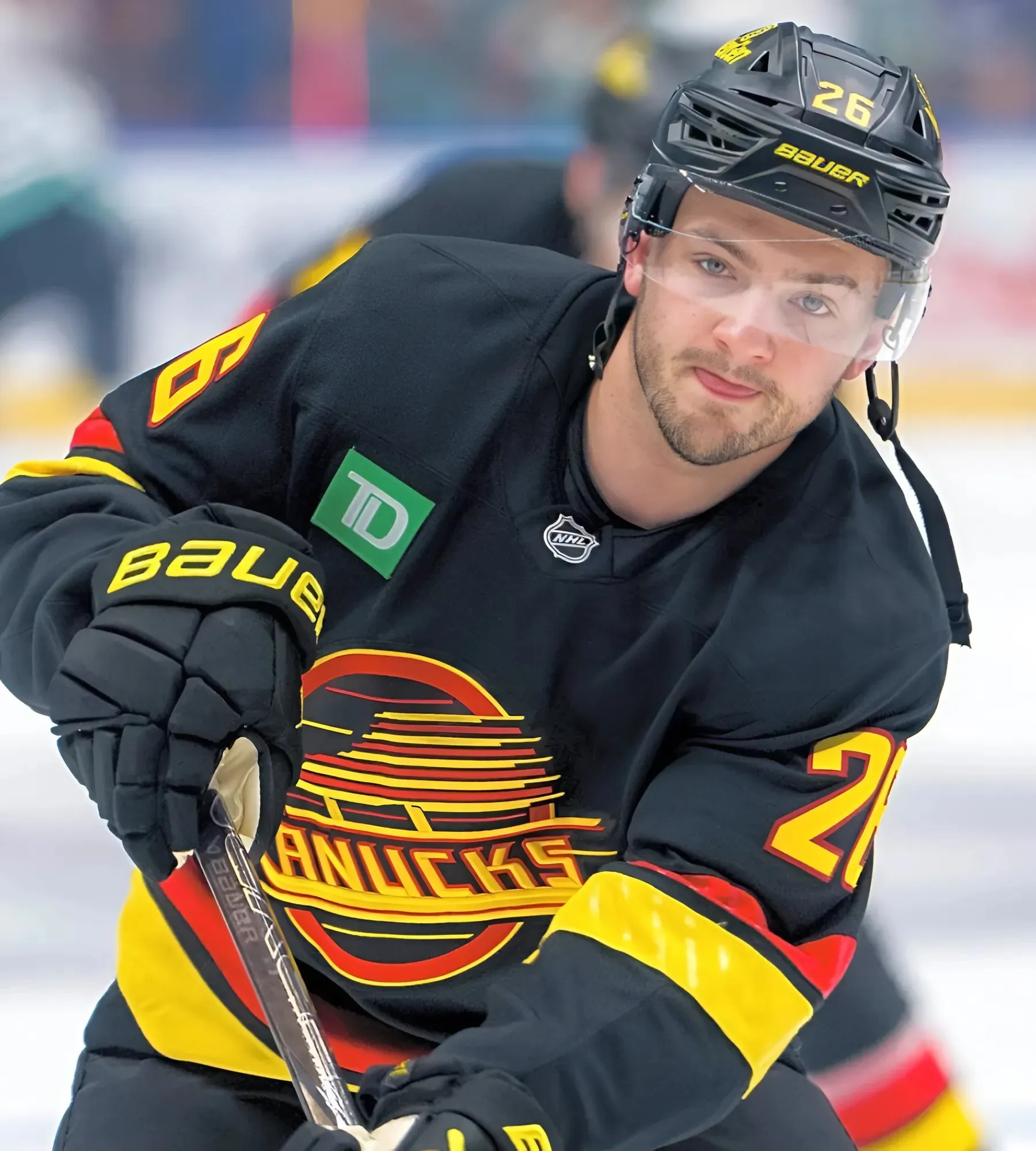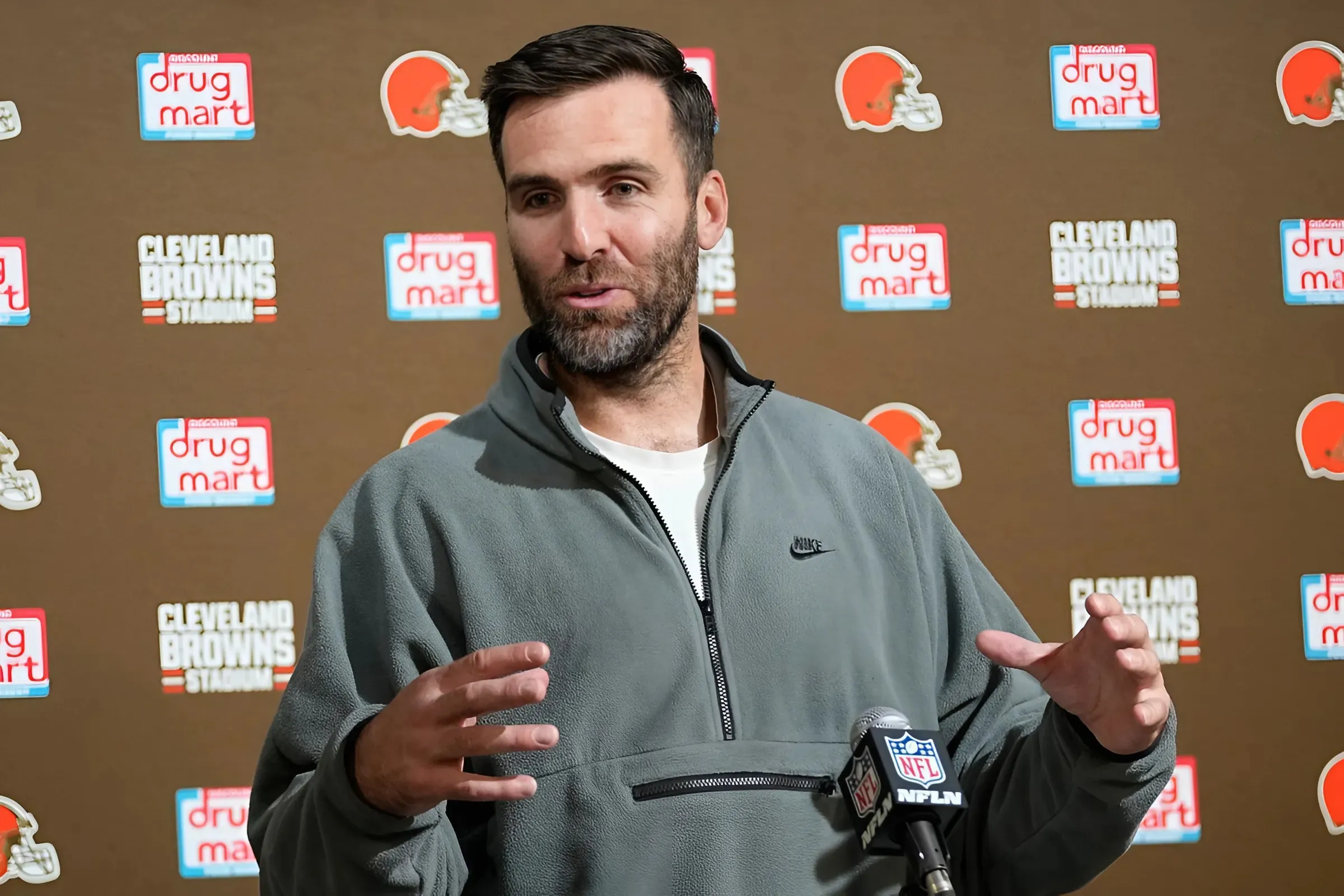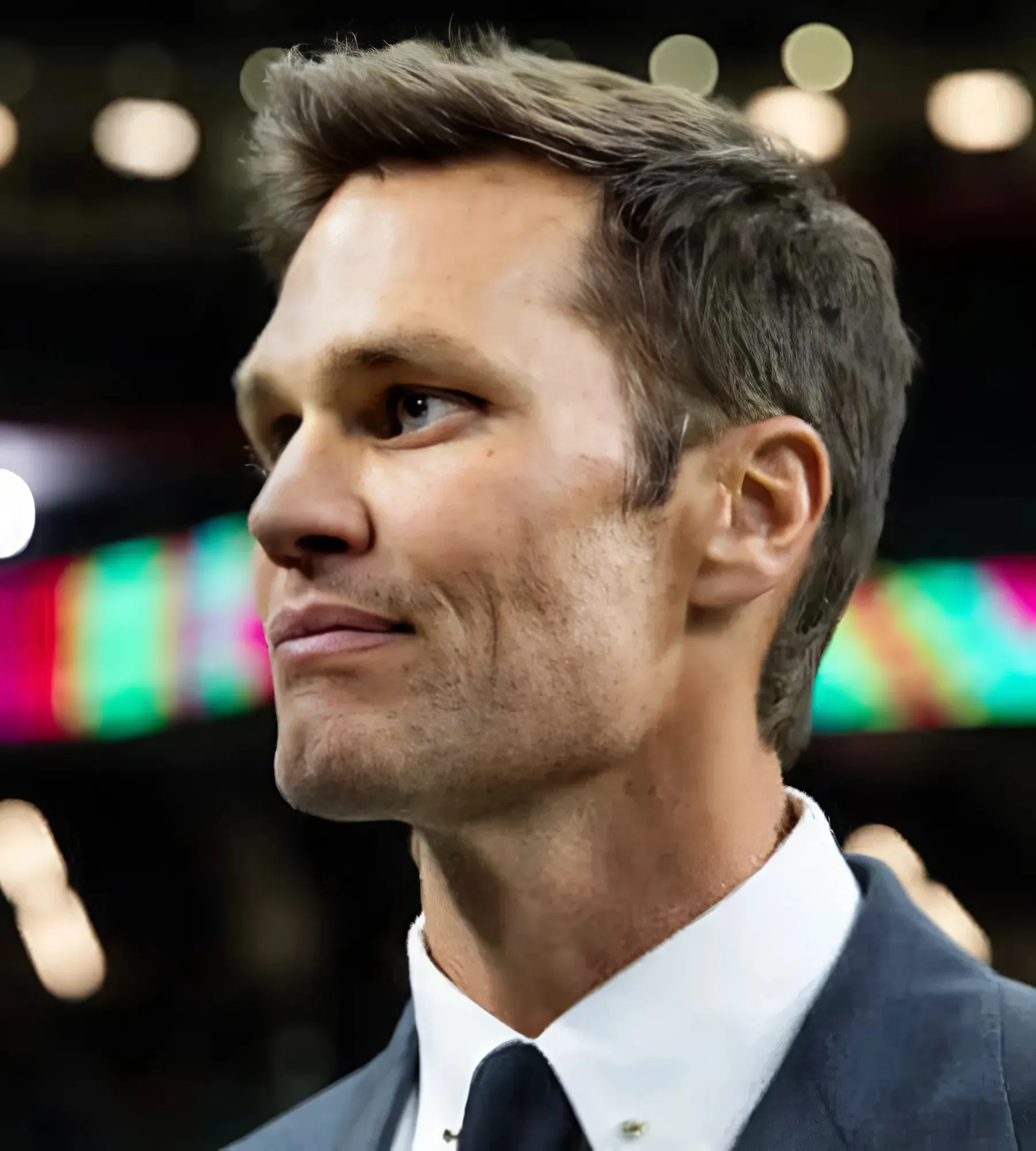In a year of franchise-wide upheaval, it’s fair to say that few in the Vancouver Canucks organization raised their profile and individual status more throughout the 2024/25 campaign than Aatu Räty.
The 22-year-old Finnish centre began the season pretty firmly ensconced within the Canucks’ top-five list of prospects, but on the lower end of that list. Few would have identified Räty as untouchable, or even as someone who had anything approaching a guaranteed future with the team. His status as the team’s top centre prospect was achieved almost by default.
But the events of 2024/25 have perhaps changed that perspective for good.
We looked at Räty’s successful developmental year about six weeks back in an article titled “Aatu Räty: An underrated part of the Canucks’ long-term solution at centre.” At that point, we were mostly writing about Räty’s ongoing achievement in Abbotsford.
At the time of that writing and with 38 points in 38 games, Räty’s AHL PPG of 1.00 had him ranked 21st overall in the league, just outside of the top-ten for centres, and third overall for players of Räty’s age or younger.
But Räty would only get the opportunity to add two more points to his totals before being recalled to Vancouver for the remainder of the regular season.
Where, coincidentally enough, he did even more to present himself as at least part of the Canucks’ ongoing solution at centre.
To say that Räty went on an offensive tear would be overstating things to some extent. But post-recall, Räty did notch five goals (and two assists) across the final 12 games of the season. Over a full 82-game schedule, that scoring rate works out to a pace of 34 goals.
Now, sample sizes aren’t always extrapolatable, and few are expecting Räty to come in and post 30 NHL goals in 2025/26. But, if anything, it’s further evidence that a player who many had consigned to a future of bottom-six centring might just have a brighter future than that ahead of him at the NHL level.
Räty’s overall numbers in this, still technically his rookie NHL season, were seven goals and 11 points through 33 games. That’s a 82-game pace of 17 goals and 27 points, which are respectable stats. If Räty can build on those at all in 2025/26, now we’re starting to talk about him immediately filling in some of the considerable gap left behind by the departure of JT Miller.
In the absence of a true 2C, could a combination of Räty and a returned-to-health Filip Chytil get the middle-six centre duties covered through committee? It might be worth considering after Räty’s offensive renaissance at both the AHL and NHL levels this season.
Of course, there is more to Räty than just scoring, and it is these well-rounded skills that will all-but-guarantee him a spot on next year’s Canucks, regardless of his offensive output
Räty has already earned himself a reputation as the Canucks’ most reliable faceoff-taker. Throughout the late-season stint, it was Räty out there for virtually every important faceoff taken, in what ultimately amounted to a lot of one-goal games. Even in overtime, Räty was often placed out there to at least win the draw and then hustle off the ice – the sort of faceoff-specialist deployment that this franchise hasn’t witnessed since the days of Jay Beagle.
Of those regular-faceoff-takers still on the roster by the end of the year, Räty led the pack with a 57.4% win-rate, considerably ahead of Teddy Blueger at 50.3% and just behind the departed Miller at 58.6%.
But even that 7% lead doesn’t quite paint the full picture of Räty’s prowess at the faceoff circle. He’s famously able to take draws ambidextrously by flipping his stick over to the non-natural right side, and that gives him one of the most niche talents in the entire league. And one of particular value to the Canucks. The team’s next-best player capable of playing centre and taking draws right-handed is Linus Karlsson, who normally plays the wing and won just 20% of his NHL draws this year.
In other words, Räty is probably the Canucks’ best faceoff-taker on his natural left side, and in a quite literal class of his own at taking them on the right side.
It might be to the point where, were it not for Räty’s emergence, then finding some additional faceoff talent might be an offseason roster priority. Instead, the problem is solved neatly enough by just giving Räty a spot next year.
But where will that spot come?
Despite what we just said about this having been a breakout, depth-chart-altering year for Räty, it’s still a crucial upcoming offseason.
First and foremost, as a pending RFA, he’ll need a new contract. This shouldn’t be a tough negotiation for the Canucks, because as much potential as Räty flashed, he’s still got a grand total of 14 NHL points to his name – and faceoffs are tough to cash in on. Expect Räty to settle for a salary somewhere in the range of $1 million and a term of about two years.
Next comes the preparation. It’s no secret that Räty’s worst quality is his footspeed, and any increase he can make in that field will improve his odds of a larger role in 2025/26. With talk of Quinn Hughes taking certain teammates to train with him during the summer, one has to wonder if Räty gets the invite. Few Canucks, if any, could benefit more from a rebuilt stride and some faster first steps.
But whether he improves his base level of skill or not, Räty has progressed to the point that he’s firmly ready for an NHL job in 2025/26. The only real question is of placement. Assuming that Elias Pettersson returns as the team’s top centre, and that Chytil at least starts the year healthy, Räty would seem to slot in as the Canucks’ 3C heading into next season, slotting ahead of the veteran Blueger neatly enough.
But that assumes that the Canucks don’t acquire an additional centre, and GM Patrik Allvin has already stated that doing so is his top offseason priority.
Were the Canucks to bring in someone new – or to re-up with Pius Suter instead – that would definitely complicate Räty’s path to minutes. In this case, it’s not nearly as simple as just shuffling Räty over to the wing, not when so many of his best qualities revolve around the faceoff dot.
In this scenario, could the Canucks seek out a hybrid-centre of sorts that could share duties with Räty? Or would they consider moving someone like Chytil out of the middle and into the more peripheral game of the wing, where he might encounter less physicality and less chance of suffering another concussion?
In the end, of course, having too much depth at centre is a good problem to have, and not one that the Canucks can claim to have encountered quite yet. For the time being, what they do have on their hands is a talented prospect who just had a dynamite developmental year, and who is now demonstrably ready for the next step – whatever that next step may be.



